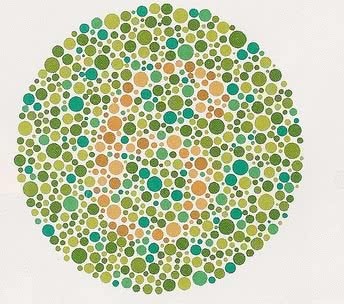Sex-linked inheritance refers to genes located on sex chromosomes that are involved in trait determination.
In the human species, the male sex chromosome Y has few genes. On the other hand, the female sex chromosome X has a large number of genes involved in determining various characteristics.
XY chromosomes have small homologous regions at their ends. Thus, there is practically no recombination between their genes.
Genes located on the X chromosome that have a corresponding allele on the Y chromosome, follow the pattern of sex-linked inheritance.
Thus, sex-linked inheritance is restricted to sex chromosomes. While the autosomal inheritance is what occurs on autosomal chromosomes.
The types of sex-linked inheritance are:
- X-linked inheritance;
- Inheritance restricted to sex;
- Inheritance influenced by sex.
X-linked inheritance
When the altered gene is on the X chromosome. This type of inheritance has the recessive pattern.
And the maternal inheritance. In this case, male offspring inherit genes from the X chromosome only from the mother. Meanwhile, female daughters inherit one from the father and the other from the mother.
Manifestations will be present in males as they have only one X chromosome, that is, they do not have any normal gene for that trait.
Some diseases related to the X chromosome
Color blindness or color blindness
O color blindness it is the inability to distinguish red and green colors. It affects 5% to 8% of men and 0.04% of women.
 The colorblind person cannot differentiate the colors of the image
The colorblind person cannot differentiate the colors of the image
It is determined by a sex-linked recessive gene, being represented by the X alleled . The dominant allele XD conditions normal vision.
A woman will only be color blind if her father is and if her mother carries the recessive allele.
Affected men pass the gene on to all their daughters, while sons are unaffected.
There is a 50% chance that the carrier mother will pass on the affected gene to a son or daughter.
Hemophilia
Hemophilia is an inherited disease in which there is a failure in the blood's clotting system. Those affected by the disease have profuse hemorrhages, even in small wounds.
This anomaly is conditioned by a recessive X geneH linked to sex. Your dominant allele XH conditions normality.
Hemophilia is more common in men and rare in women.
If a hemophiliac man has children with a woman without hemophilia (XH XH), the children will not have hemophilia. However, the daughters will carry the gene (XH XH).
Inheritance restricted to sex
This type of inheritance corresponds to the few genes located on the Y chromosome, called Dutch genes. These genes are inherited from father to son.
An example of a Dutch gene is the SRY, responsible for the differentiation of the testes in mammalian embryos.
An example of sex-restricted inheritance is the hypertrichosis, which is characterized by the presence of thick and long hair on male ears.
Inheritance influenced by sex
This type of inheritance occurs when some genes are expressed in both sexes but behave differently in men and women.
An example of this heritage is the baldness. The gene that conditions this characteristic is found in an autosomal allele and behaves as dominant in men and recessive in women.
For a woman to be bald, she must be homozygous recessive. Meanwhile, the male needs only one dominant allele.
This difference in behavior is due to each individual's hormonal environment.
To learn more, read also Introduction to Genetics.
Exercises
1. (UFRS) Leandro, worried about the possibility of becoming bald, consulted a friend who was studying genetics. She said that although her parents were not bald, her maternal grandmother was. In the maternal grandfather's family, there was no history of baldness. His friend explained that baldness is a characteristic influenced by sex and that it is expressed in men as homozygosis and heterozygosis and in women, only in homozygosis. So he concluded that the chance of Leandro becoming bald was 50%. This conclusion is based on the fact that:
a) your mother is heterozygous.
b) your paternal grandfather is bald.
c) your paternal grandmother is heterozygous.
d) her father is heterozygous.
e) her maternal grandmother is heterozygous.
a) your mother is heterozygous.
2. (Fuvest-SP) Color blindness is X-linked recessive inheritance. A normal-sighted woman whose father is colorblind married a normal-sighted man. The probability of colorblind children in this woman's offspring is:
a) 1/4 of the boys.
b) 1/4 of the girls.
c) 1/2 of the boys.
d) 1/8 of the children.
e) 1/2 of boys and 1/2 of girls.
c) 1/2 of the boys.
3. (UFMG) - The following propositions are in agreement with the transmission of recessive gene linked to the X chromosome, EXCEPT
a) All male children of an affected woman married to a normal man are affected.
b) All female children of an affected man married to a normal woman are affected.
c) Heterozygous women transmit the gene responsible for the trait to half of their children of both sexes.
d) All children of both sexes of affected women married to affected men are also affected.
e) Half of the female children of heterozygous women married to affected men are normal.
b) All female children of an affected man married to a normal woman are affected.
4. (UFMG) - Hypophosphatemia with vitamin D-resistant rickets is a hereditary anomaly. In the offspring of affected men with normal women, all girls are affected and all boys normal. It is correct to conclude that the anomaly in question is:
a) determined by an autosomal dominant gene.
b) determined by a sex-linked dominant gene.
c) determined by an autosomal recessive gene.
d) determined by a sex-linked recessive gene.
e) determined by a gene on the Y chromosome.
b) determined by a sex-linked dominant gene.


